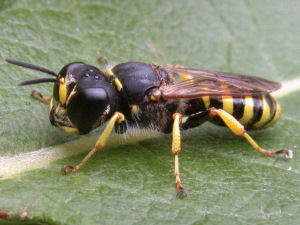

- Cambridge, 22 Jun 2002.
- C. arenaria stocks its nest with weevils (Vine Weevil size or slightly smaller)
- NBN Atlas
Return to: Hymenoptera Index | Insect Index

|

|
|

|

|
|

|
|

|
|

|

|

|
|

|
|

|
|
Return to: Hymenoptera Index | Insect Index